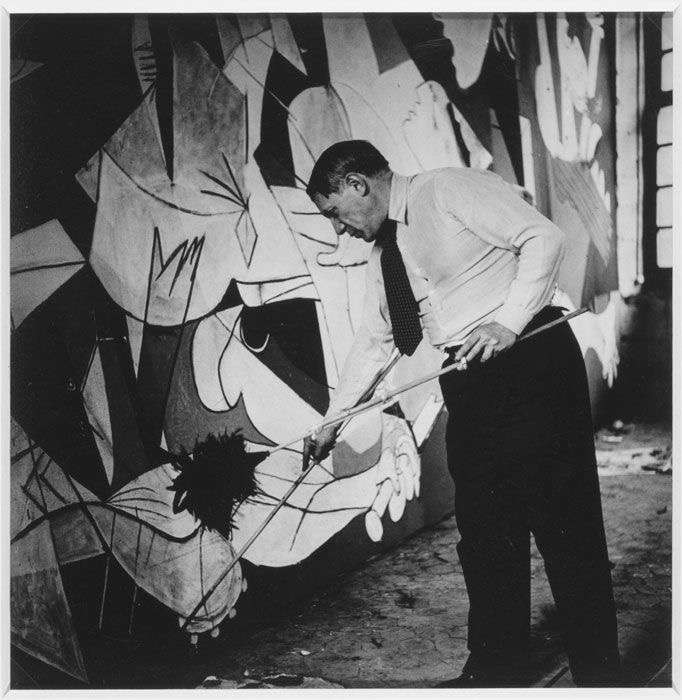Only in 1981 did Pablo Picasso's masterpiece "Guernica" return home, a painting seven meters eighty-two centimeters long and three meters fifty tall. Its value? Priceless! Guernica, is Picasso's masterpiece known as the expression of protest against the cruelty of war, characterized not only by its size, but above all by the color tones, black, gray and several whites that make it even more controversial for its political implications overshadowed by its symbolism. The painting remained outside Spain for 44 years by the will of the author himself, who with this decision wanted to express his condemnation of fascism. The work is entitled to the holy city of the Spanish Basque region, Guernica to be precise. Picasso draws inspiration for this work on the first bombing and the horrors of the Second World War. The figures you see are razor sharp, a pierced and suffering horse, a burning house, a motorcycle child, a decapitated soldier, screaming women, all wrapped up in a kind of social angst. When Picasso created "Guernica" he was 55 years old living in Paris and was already a famous painter. It was 1937 when the Republican government commissioned him to paint a mural for the new Spanish Pavilion at the Paris World Fair. He had never painted such subjects before, but inspiration soon struck, just after learning that Guernica had been bombed by Luftwaffe bombers. The victims ranged from 200 to over 1500. That day was funereal and Guernica was transformed into a mountain of smoking rubble and charred timber.

The image of the massacre ignited the artist's imagination who immediately began to draw sketches, about 25 drawings. But then attacked by a cathartic spirit, he threw himself headlong into the painting. In the center a bull and a horse, symbols already present in the works of the Master. While the bird seen in the shadows is a dove of peace struck to death, the woman with the lantern expresses anguish and the dismembered soldier death in her drama. Observing the painting, one feels the need to close one's ears so as not to hear the screams or the crackling of the fire. When the canvas was exhibited at the World's Fair, it was defined as an anti-social work is ridiculous and completely foreign to the healthy mentality of the proletariat. In 1938 the painting was exhibited in Norway, England to raise funds for Spanish refugees who escaped the civil war. The same in 1939, this time in the United States, where he wanted the work to remain. It was given on an extended loan to the New York Museum of Modern Art. Before dying, Picasso expressed the wish that "Guernica" would return to Spain, the negotiations began during the Franco regime, but were slowed down by the thought and will of Picasso, who imposed the return only when republican freedoms had been restored. In 1963 the Picasso museum was inaugurated in Barcelona, which today houses most of the artist's works. From 1969 to 1971 Picasso was asked several times to bring back and exhibit “Guernica” at the museum, but it was useless. Picasso died in 1973, two years before Franco's death, leaving no will. At the time, his assets were valued at $260 million with 42 works of art still unsold. During the practices for the arrangement of the artist's assets, his friend and lawyer Roland Dumas, declared that he was in possession of a letter written by the master, in which he declared that Guernica belonged to the Spanish Republic. However, the political problem remained, which was resolved with the intervention of their children Maya and Claude, even if with great difficulty they finally decided to bring back the opera. Since then Guernica has a new task to perform in Spain. What was an expression of anger at the ravages of the Spanish Civil War will forever represent the strength of a new country without wars.





